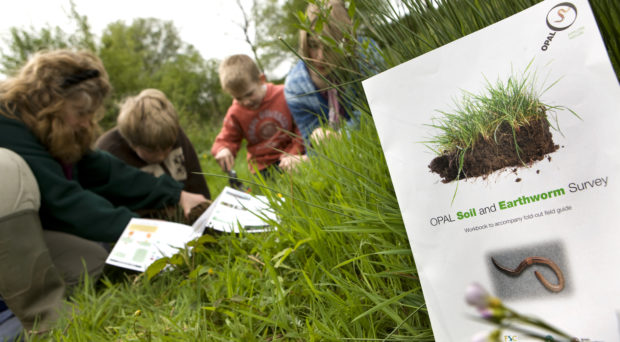
‘“We’ve found something!”, the teenage boy shouted as he ran up the slope towards me, gasping for breath.’
Matt Keyse an OPAL Community Scientist, regales a typical session with students taking part in the Bugs Count Survey in the OPAL Scientists blog. Taking part in real science is undoubtedly a means to bring learning to life but can it have lasting benefits for scientists and policy makers alike or is it just a glorified science communication tool?
The authors of the latest BMC Ecology supplement on citizen science explore this question through their experience of Open Air Laboratories (OPAL), a national citizen science network now approaching its ten year anniversary.
They explore what the citizen science phenomena consists of, why people choose to commit their precious time to data collection, what kind of science can be generated and how challenges associated with this multi-aim discipline can be tackled.
So what is this new movement that everyone is talking about?
There are a huge number of definitions and principles for citizen science but boiled down to its essence, it largely does what it says on the tin: it is about citizens (i.e. non-expert voluntary members of the public) doing science (driven by professional scientists, policy makers or their own ideas).
While data collection by volunteers has taken place for centuries (indeed long before Darwin was measuring finch beaks), the contemporary term emerged from democratic and awareness-raising ideals (see Davies et al. for the evolution of citizen science).
Data collection, once the reserve of rich ‘gentleman scientists’, is now open to everyone as a result of a new wave of technology supporting the collection, storage, visualization and interpretation of data.
You can now instantly send a report of a diseased ash tree for official government monitoring, spend ten minutes squirrelling away on your computer working out the structure of proteins in your body, or improve the habitats in your local area and monitor the impact on pollinators across a whole year. Indeed on scistarter.com you can even search for projects to do ‘in the car’ or ‘while fishing’.
Why are there a whole army of people out there who want to get involved?
Learning and a sense of giving back are frequently citied as significant drivers for people wanting to get involved. However, these are only a few reasons. The latest paper by Everett et al. explores not only people’s initial reasons for wanting to get involved but also what supports and prevents people from staying involved. One person fed back:
“I think OPAL goes into more depth which is good, and feels more ‘sciencey’ [sic] – new word. It’s got me interested in going a bit further with researching, rather than just plopping about in a field or puddle, nice as these activities are”
What the science says
If you search for citizen science on ISI Web of Knowledge you will be presented with almost 12,000 papers on this topic, or you can delve into whole text books about the subject. OPAL has contributed to this new field of literature by publishing a number of reports and papers on the findings from its eight national surveys. Their latest papers in BMC Ecology explore the results from the OPAL Biodiversity Survey and OPAL Water Survey.
Gosling et al. conducted an analysis of the Biodiversity Survey data and found that urban hedgerows are important habitats for wildlife and hard surfaces adjacent to the hedges have a considerable impact on both plant and invertebrate communities.
Rose et al’s. analysis of the OPAL Water Survey – a national assessment of water quality and clarity in England, found that almost 30% of lakes fell in the highest quality group. The paper also stressed that one of the greatest challenges of using citizen science data is the reliability of data collected by amateurs.
The evaluation
Sitting at the interface between outreach and research, citizen science inevitably faces challenges with competing aims, operational approaches and outputs. Here Lakeman-Fraser et al. explore some of these trade-offs and suggest operational solutions to navigate these muddy waters.
How can you get involved?
So, if this has intrigued you to find out how citizen science can change the world (or your world!) then head to the OPAL website– they’ve just launched their new survey on pollinators.
Perhaps you’re a citizen science practitioner wanting to learn from others – why not join up to the British Ecological Society Citizen Science Special Interest Group or the European Citizen Science Association (ECSA).
After an inspiring ECSA International conference in Berlin in May, the (US based) Citizen Science Association and the Australian Association will be hosting networking events next year- come along!
Comments